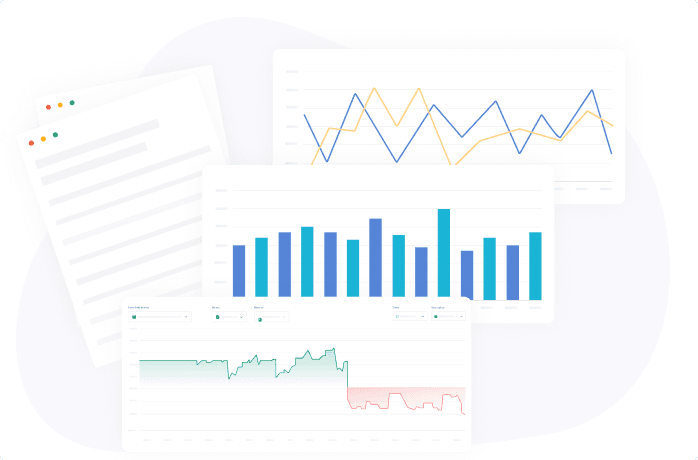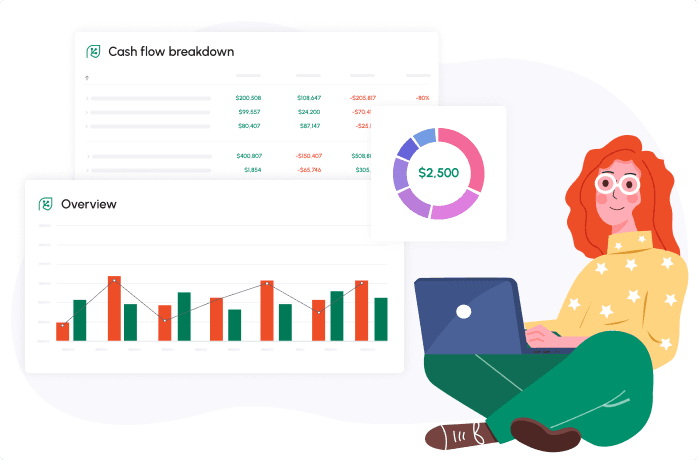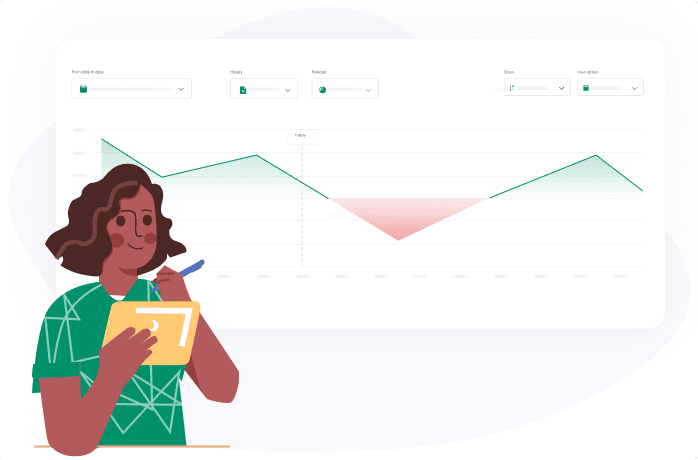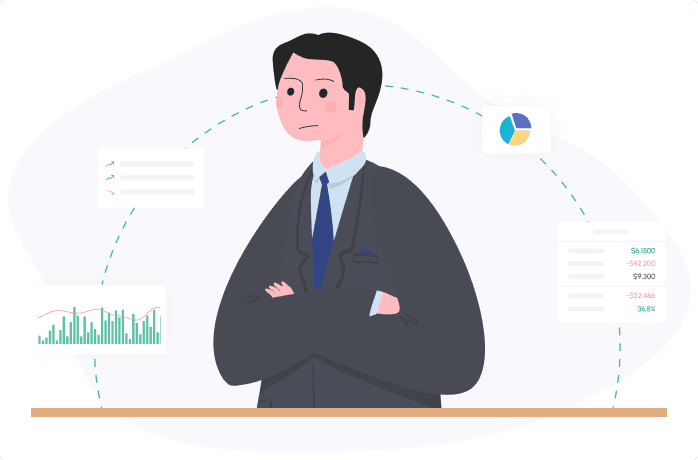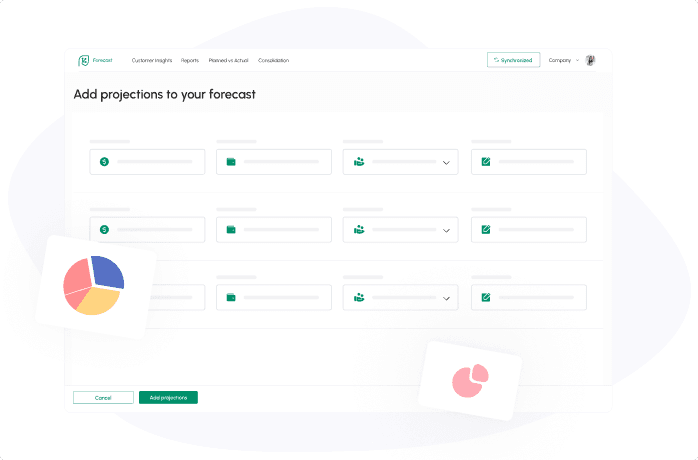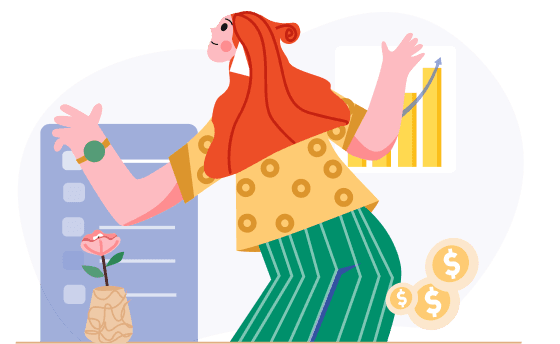

Cash flow for retail business is one of the most important financial metrics that you can track. When you know how much disposable cash you have, you can make smarter business decisions.
However, before we can begin going into cash flow for small retail business, it’s important to learn what this metric is and why it’s important.
What is Cash Flow?
Cash flow is the amount of cash and equivalents that you have going in and out of a business. You can break this into:
- Cash inflows or cash you receive
- Cash outflows or cash you spent
Cash flow is your inflows minus your outflows. It's important to note that cash must be liquid, meaning you can use it immediately and it doesn’t include accounts receivable.
Why Is Cash Flow Important for a Retail Business?
Why is cash flow for retail business important? It is as simple as being able to use your own money to pay debts. If you have a well-established business, you can increase your cash by taking out a loan and can satisfy debts.
But you’ll also need to pay interest back on the debt, causing your profit margins to slump in the process.
Cash flow for retail business means:
- Profit margins remain high enough for the business to be profitable
- Stock isn’t remaining on shelves for long periods of time
Retail is an industry where, in most cases, you’ll receive payment for goods upon sale. If you operate in the business-to-consumer space, this means you’re receiving:
- Cash
- Debit
- Credit
However, if you operate in the business-to-business space, or B2B, you may allow your customers to make purchases on credit. When you have invoices pending payment by customers, this isn’t realized cash flow because it’s not in your bank.
You cannot use accounts receivable to pay your rent or a vendor.
Additionally, knowing your cash position allows you to:
- Act against shortfalls to ensure that operations can continue without causing you to go into too much debt and risk potential bankruptcy.
- Reduce stress in the business because you’ll know how much cash you have to maintain operations
- Grow with the knowledge that you’re choosing the most optimal time to invest money, hire new people and so on
Now that you know why cash flow is important, let’s look at how to calculate it properly.
How Is Cash Flow Calculated for Retail?
Cash flow for retail business is no different than cash flow from another type of business. Calculating cash flow requires you to do two things:
- Calculate all of the cash coming into the business
- Calculate all of the cash going out of the business
- Subtract the outflows from the inflows
You can also calculate your starting cash for a better understanding of your overall cash position. With this said, cash flow for retail business will require you to:
- Go through all of your bank transactions
- Gather all of your receipts
- Consider influxes of cash from loans or investments
If customers pay in cash, you’ll need to use receipts to tally your total inflows plus any additional funds that come in from all sources. Accountants will be sure to scour your bank accounts, credit payments and more to ensure that every last cent is accounted for.
Next, you’ll need to calculate your total outflows, and these would include:
- Payments for goods and materials
- Rent
- Payroll
- Utilities
- Insurance
- Others
You need to add up all of your outflows so that you have a true understanding of your cash position.
Example Of a Cash Flow Forecast for a Retail Business
Cash flow for retail business can also be forecasted. For example, you can:
- Estimate cash inflows based on historical data
- Estimate cash outflows based on historical data
- Make adjustments based on growth or decline percentages
- Add in parameters to learn how changes impact cash flow
When you use forecasts, you’re empowering decision-makers in the business to take actionable steps based on your cash position. For example, if you know that you’ll struggle to meet your financial obligations because of low cash flow, you can:
- Take steps to reduce outflows
- Secure a loan or credit
- Etc.
Forecasting your cash flow for retail business is one of the smartest decisions that you can make. If you have a general idea of your business’s cash position in the future, you can then take action, such as funneling more cash into growth or securing loans to help push through slow periods.
Different Types of Cash Flow for Retail Business
Multiple types of cash flow exist, and cash flow for retail business may include:
- Cash flow from operations
- Cash flows from investing
- Cash flows from financing
Operating cash flow for retail industry is what most people associate with cash flow. However, you also need to consider all of the money coming in from investments and financing, such as taking out a loan.
Loans, for example, will provide a business with the money it needs to continue operations unhindered.
Calculating all of these different types of cash flow will provide a clear picture of your business’s operations. If you’re just starting out with calculating your cash position, a few of the tips below can make the process a little easier.
How To Improve Cash Flow: Management Tips for Retail Businesses
Cash flow for retail business shouldn’t only be monitored: it should lead to business changes. If you’re not taking action based on this metric, you’re missing out on key opportunities. You can improve cash flow in a few ways:
- Stock management. Retail is an industry where holding on to inventory for too long can cost you significant money. You'll want to work on your stock management to ensure items do not stay on store shelves too long, nor do they end up going out of favor with customers. You can work with your finance team to help manage your stock better and reduce any issues with overstocking.
- Reduce expenses. Maintaining a LEAN business is recommended for businesses worldwide. You don’t want to have expenses out of control and eat into your cash flow too much. Instead, look through your expenses to try and find key ways to save on costs every month.
- Review insurance. Working with an insurance broker can help you identify ways that you can reduce insurance. For example, you may find that combining policies or switching insurers will save you a lot of money.
- Audit fees. How much are you paying in processing fees? You should have a general idea of how much all of the fees you pay are, such as your processing fees, subscriptions and others.
- Cash reserves. Maintaining cash reserves is one of the business best practices that ought to be followed by every business. Maintaining cash reserves allows you to go through negative periods of cash flow without needing to go deep into debt in the process.
If cash flow is at dangerously low levels, you may have some very difficult decisions to make. For example, you may need to reduce your workforce or even consider outsourcing some of the work to save on costs.
It's never an easy decision to cut back on costs or workforce, but it may be an absolute necessity for your business.
Over time, you’ll begin to master your cash flow analysis so that you can make data-driven business decisions going forward.
Cash Flow Analysis to Retail Business with the Cash Flow Frog App
If you find cash flow for retail business confusing or complex, you can make all of these calculations simple and easy with Cash Flow Frog. Using an app is one of the easiest ways to:
- Import all of your inflows
- Import all of your outflows
Plus, using advanced algorithms, apps can help calculate cash flow for retail business in minutes, reduce errors and also help with analysis. The right app, such as Cash Flow Frog, will help you make sense of your cash flow with:
- In-depth insights into your best and worst customers
- Trends in your cash flow that will positively or negatively impact your operations
You can even run projections and forecasts to understand the future potential of the business. With all of the information you have available, you can make smarter decisions on the future of the business, such as if you have more cash than expected, you can leverage it for growth opportunities or to reduce costs by buying inventory in bulk.
If your cash flow analysis shows lower-than-expected cash flow, you can then take this time to find where you can reduce expenses.
Cash flow analysis empowers your business to make calculated decisions on its future.
Summary
A cash flow forecast for retail business is crucial to understand the future financial health of your business. You can also run cash flow statement for retail business for the past week, month, quarter or other period to understand your cash position.
If you’re struggling to maintain cash flow or want an easy way to begin monitoring your cash flow, give Cash Flow Frog a try.
Related posts:
You may be interested:
New:



